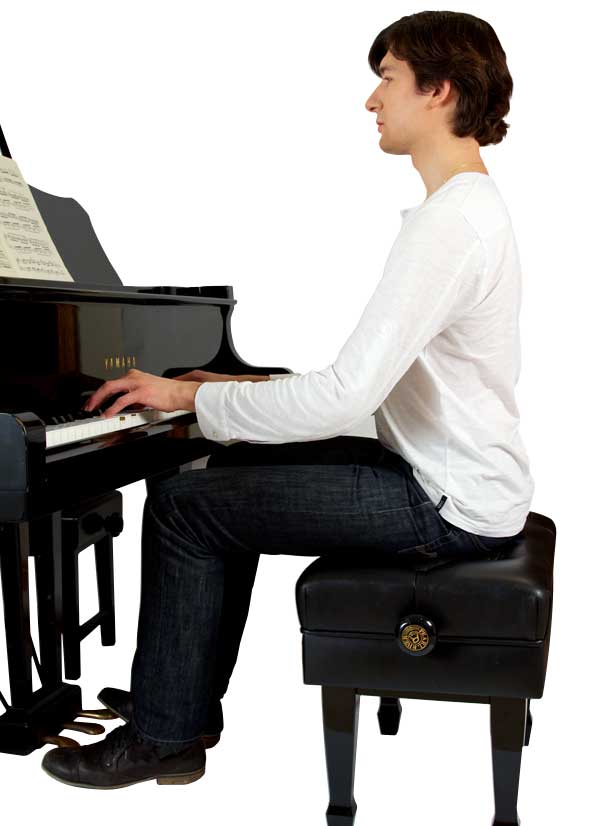
Approach to Practice
From the beginning you should set yourself a goal. Many people learn piano because of a desire to play like their favourite artist (e.g., Elton John), or to play a certain style of music (e.g., Rock, Blues etc.). Motivations such as these will help you to persevere through the more difficult sections of work. As your playing develops it will be important to adjust and update your goals.
It is important to have a correct approach to practice. You will benefit more from several short practices (e.g., 15-30 minutes per day) than one or two long sessions per week. This is especially so in the early stages, because of the basic nature of the material being studied. In a practice session, you should divide your time evenly between the study of new material and the revision of past work. It is a common mistake for semi-advanced students to practice only the pieces they can already play well. Although this is more enjoyable, it is not a very satisfactory method of practice. You should also try to correct mistakes and experiment with new ideas.
How to Sit at the Piano

Photo 1
Sit up straight and relaxed. If your seat can move up or down, adjust it to a comfortable height. The instrument shown in Photo 1 is an acoustic piano, but the sitting position is the same for all types of pianos.
Hand Shape

Photo 2
Always curve your fingers. This helps keep your fingers at the same level, as shown in Photo 2.

Photo 3
When you play the keys on the piano, use the tips of your fingers, and the side of your thumb. See Photo 3.